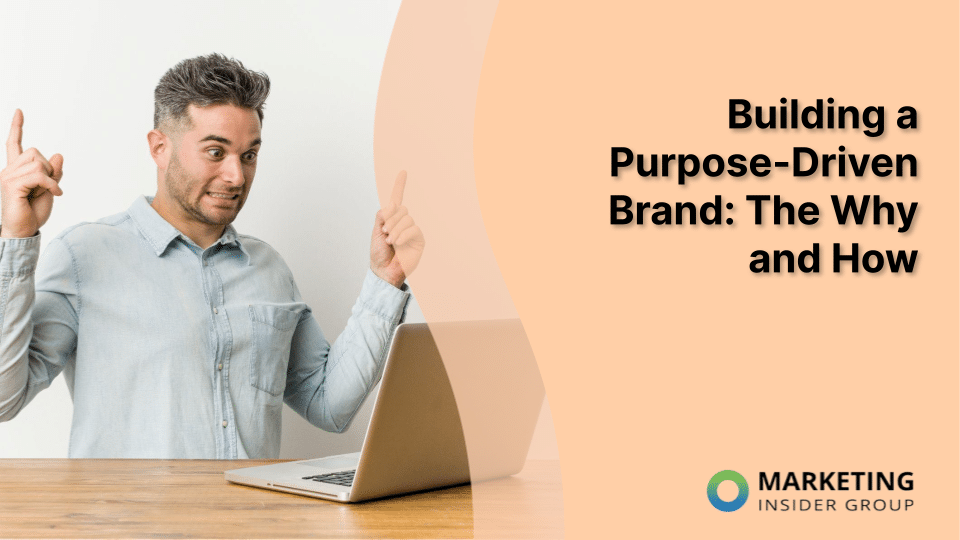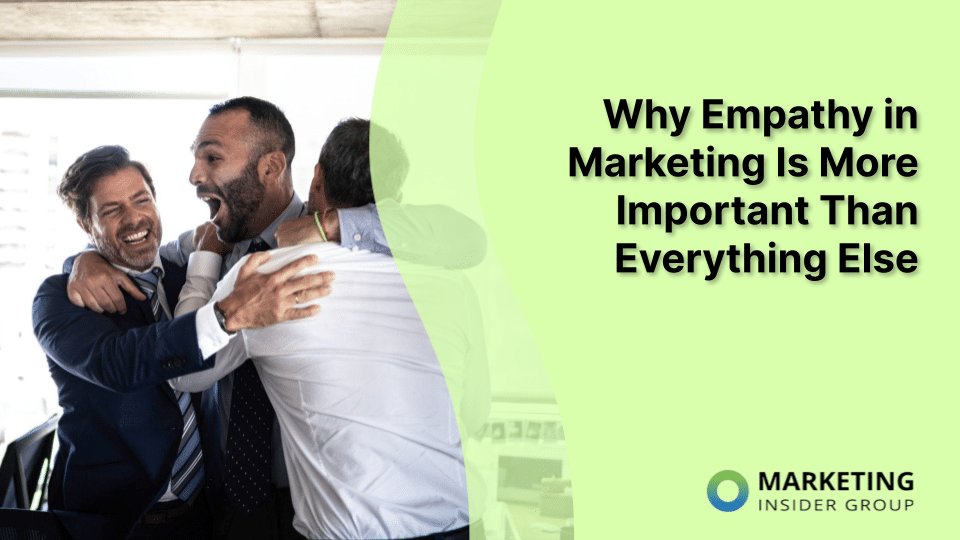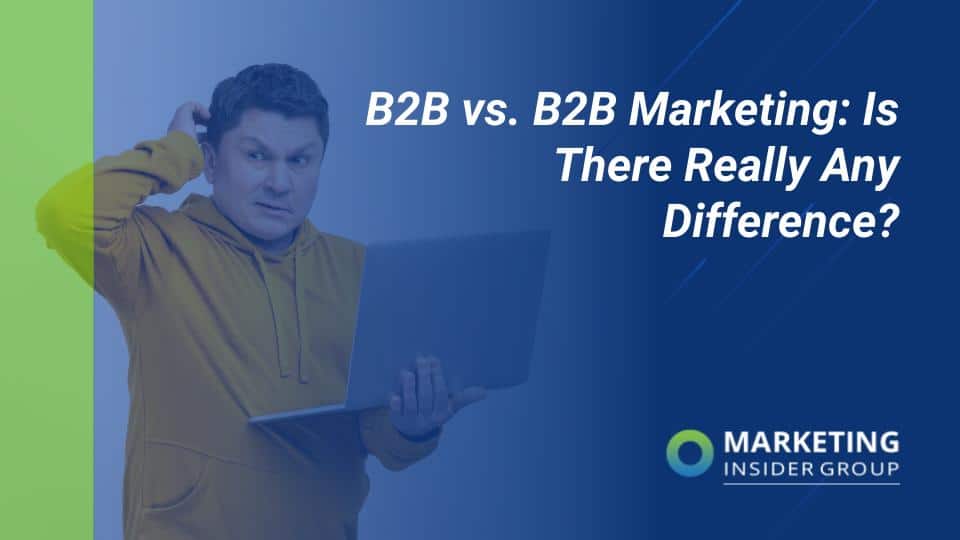![Building B2B Relationships With Trust and Empathy [Interview]](https://marketinginsidergroup.com/wp-content/uploads/2023/09/Building-B2B-relationships-with-trust-and-empathy-1020x510-1.png)
Building B2B Relationships With Trust and Empathy [Interview]
We have more sales and marketing technology and channels to reach our customers, but they’re increasingly tuning us out.
In short: we’re getting more disconnected from customers.
Something is missing.
Even though our tools have become smarter with AI and machine learning, connecting and building B2B relationships has never been harder.
The question is: How can we connect better and build relationships with B2B customers?
That’s why I interviewed Steve Woods (@stevewoods), Founder & CTO at Nudge to learn how we can be connecting and building B2B relationships with trust and empathy…
What inspired you to start-up Nudge?
Sure thing. You and I have known each other, obviously, for a long time. A few decades. So, my history before Nudge was Eloqua, in the marketing space, obviously, it’s a space you’re very familiar with, you’re working a lot with marketers.
And really, we were able to see this wonderful transition as marketing went from kind of an arts and craft discipline to a very measured lead generation, demand generation-oriented discipline that started to connect with sales. Here are leads that are qualified; that are interested.
And, that was a wonderful transition to see. But, looking over the fence at the world of sales, we realized that the core of getting those deals done was the next step.
Building trust and relationships
The core was getting the trust and the relationships (and the breadth and depth of relationships at our organization) that would then allow that deal to be moved forward.
The trust and the empathy to be developed, and ultimately the deal to be closed based on those relationships.
As the Eloqua story was winding down, Paul and I decided to jump in and tackle relationship intelligence and use relationship intelligence to understand where empathy is being built, where trust is being built, and how you can make a sales team more effective, by focusing their efforts on the right initiatives.
Brian: That’s cool, just how you took your story from where you were to what you’re doing right now.
Growth lessons: relationships, trust, and empathy are the core
I think the thing that we were lucky with, more than anything, in Eloqua was being part of a major change in a space. Marketing going from unmeasured to measured, and all the effects that that had on the people and the processes and the technology and the understanding.
We were lucky to be a core part of that, and that helped us kind of flow along with that river.
I think what we were trying to do with Nudge was to be a little bit more proactive and say, “What’s going on at a macro level that is going to be a dominant theme of a space for the next decade?”
And looking at sales and looking at relationships, it became very clear that relationships, trust, empathy were the core thing, and it was unmeasurable. It was intuitive.
Dealing with deal slippage
Every sales leader, when you’re talking about deal slippage when you’re talking about deal progress, when you’re talking about your forecast, it’s all about the relationships and the trust, but it’s not measurable. It’s self-reported by sales reps that often have kind of “happy ears” on the process.
And so, we thought, “If we can do that, if we can figure out how to put a measurement on trust, empathy, and relationships, and then build the tooling on top of that to help people steer the ship in the right direction, then we’re going to be part of a very interesting transition.”
And that’s turned out to be true, as you see sort of the evolution of the sales space: an interesting place to find ourselves in the middle of.
Brian: Yeah. Before us having our interview, we were talking about some of the changes that have happened in sales, and just what’s been happening for our customer, and how difficult it’s gotten for people to get things done, including buying. And one of the things that got us reconnected is, I read the post you wrote about holding the hustle.
What inspired you to write about holding the sales hustle?
Absolutely. That, as with many things, stemmed from a rant, which is always a good place to start.
And it’s interesting because we’re working in this space of sales, so we spent much time and developed a series called “How I Buy,” that interviews buyers and how they go about buying.
Buyer and Seller Differences
And then on the other side, we spent a lot of time talking with salespeople on how they sell. It was Mars and Venus.
Buyers are all about developing an understanding and kind of guiding themselves down a journey, selectively bringing in salespeople when they need some deeper points of view, and really wanting them to be thoughtful, co-conspirators on a journey.
Then you talk with salespeople and it was automation, it was numbers, it was a thousand emails a day. It was, “Hey, did you get my last email sequences?”
It was all hustle, hustle, hustle and it was bizarre to look at these and realize that they were attempting to describe the same animal.
It was bizarre.
At the same time, you see the effect of this. Maybe the first of these automated sequences, you received them as an executive. “Oh look, it’s diligent follow-up. They’re following up.”
Stop customers from experiencing this kind of following-up
And you get those today, and I think my spam folder is filled with hundreds and hundreds and hundreds of, “Hey, did you get my last email?”
So, the rant of, “Stop. We must stop this in sales. It’s not working. It is not going to work. It’s going downhill, and it’s going to have to continue to go downhill.”
That developed into the “hold the hustle” thesis, and that’s gotten a huge response. I think everyone intuitively got that.
And we were able to, luckily, kind of articulate something that many people were feeling of why the tools that they were told to develop, and employ is just not driving at anything that even came close to building trust and empathy.
Biggest influence on the buying journey
Brian: Yeah, and as part of my work interviewing customers, it’s surprising how little impact marketing has in their journey, regarding the marketing of the vendor, and how they’re learning in the process.
But, what a difference the salesperson makes in the customer experience and in terms of building trust, in terms of the customers want to know the sales rep is their advocate. They want to know they’re talking to them straight. They’re not pitching to them.
Brian: So, as you’ve done your own outreach, can you share any stories, or any stories of people who’ve held the hustle, and what they’ve seen? If they were doing it one way and any changes you’ve noticed, or what’s been the results?
Buyers want you to journey along with them
Steve: If you look at what buyers are looking for, it’s that person to go along with them on a journey and challenge them, educate them, make them squint, turn their head sideways and look at a problem in a new light. It’s that; that’s what people want.
The facts and information are all out there. What you’re looking for as a buyer is not that. You can get that. You can go google something, you can find any facts and information.
- What you want is the “So, what?”
- What does it mean?
- What are the challenges?
- Where is it going to work?
- Where is it not going to work?
And the salespeople who have been able to say, “No. That is my job. My job is to challenge people.” And they go deep on customer problems.
They try and understand that aspect of the customer’s world better than the customer, and they focus in on the right question.
When you get hit with that question and, “Huh, I didn’t think about it that way. Okay, now I’m listening.”
Now there’s an opportunity for us to talk because I didn’t think about my world in the way that you just asked about it. And so now the light bulb’s gone off, and I realize that there’s something more for me to learn.”
Moving the trust bar forward
That’s when that bar of trust starts to move forward, and it’s the sales reps that come at it that way and find those opportunities to say:
“Is something going on in your world, Brian? You’re probably thinking about it this way, and I’m going to push you to think about it that way and here’s why and here’s a story, and you’re going to be maybe a little uncomfortable with the story. However, it’s going to give you some insight that you wouldn’t have got just doing a google search.”
Helping customers buy is about helping them change
Brian: I like the word insight, and as I was listening to you I thought that everything you were saying is helping your customer have that insight. Because, if we’re going to drive change, (and that’s what people are doing when they decide to solve a problem or buy something, is change) change is hard. And not only that, helping other people experience change is even harder.
So, how do we do that? It sounds like a lot of the work you’ve been doing has been connecting the dots, helping people understand the relationships, and helping them go through that journey.
So, as you think of automation, and you’ve been a part of this space for a long time, how do you see empathy and automation fitting together into, in sales and marketing, how you do outreach today?
How do empathy and automation fit together
Steve: I think that is the key question and I think the answer is a little bit easier than it would seem because the simple version of the answer is: you can’t automate empathy. You can’t automate trust.
But, there’s a lot of background work that goes into finding the opportunities to say, “Oh, there’s a chance here that I can add a little bit of value to your world that you wouldn’t have expected.”
To do that I need to understand my world. I need to understand you, your history, your business, what’s going on right now. And then I need to put those two together and insert a point of view in the conversation. After doing all that background research, to say, “What’s happening right now with you, your journey at large and your journey with my business specifically?” And then map that out to a point of view.
That can be done through a lot of automation and AI. The conversation, the, “Hey Brian. Saw this, thought that, here’s what’s going on. Here’s how you might want to think about it.” That’s a very human thing to do.
Put enough of it on a silver platter to say, “Here’s where Brian’s at, and these next steps on the journey might make sense based on all of this history and where he’s at today.”
That can be facilitated by automation; it’s a lot of research and grunt work. It can be optimized a lot better just to tee up those silver platter moments.
3 Steps to build and grow relationships
Step 1: Identify where you are losing touch
Steve: I think the easiest step for anyone that’s trying to build relationships is, quite simply, to look at those relationships, and just say, “Where am I losing touch?” Most people don’t do that. You have the first conversation, if it goes to a deal, great, but 90% of them don’t and they just drop off.
The best reps used to do this manually with Excel spreadsheets. Now there are two things. One of the things we focus on with Nudge, is where you can say, “Look, just make sure I’m in touch with these people every three months. That’s it. I need to reach out.” And that kind of puts a floor on your relationship building.
Step 2: Develop the next step to help each person on their journey
However, then the next point is, okay, I now need to develop this logical next step for where that person is on the journey that they’re mapping out.
So, I need to understand what’s going on in their world:
- What’s happening with their company?
- What are the new recent events that have happened?
- Have there been any exec changes?
- Where are they at on their journey with my organization?
This is an advancement of the digital body language concept that you and I have chatted about over the last decade.
- Where are they?
- What have they done?
- What have they looked at?
- Have they used a free trial? Did they get value out of it?
- Where are they at on that journey?
Step 3: nudge them along on the journey
And given all those things, what can I kind of nudge them to do next to say, “You’re probably here and you’re probably thinking this. But if you just did this one little thing, or thought about it differently, or looked at a data set that I’m going to send over to you, your perspective would evolve.”
And it’s not a sales pitch.
It’s not, “Hey, let’s do a one-hour sales call.” It’s, “Let me show you a new perspective that you might appreciate.”
And if you can do that, and you can guide them along this journey, what you’re doing is pushing them forward, but you’re also building trust.
You haven’t asked first; you’ve given first and in doing so, you’ve built those little tiny nuggets of trust that eventually will guide you to be able to say, “Hey let’s do something here. Your next step on the journey is to become a customer of ours. Here’s what that would look like. We’ve built all this trust; let’s make this happen.”
Conversations and reciprocity working together
Brian: I love that. I think that if our audience were just to take those insights and apply them…As I was listening to you, there are two ways of building a relationship.
One is like we’re doing, we’re having a conversation. We’re in dialogue together.
The second way is reciprocal altruism and what it really means is we give something of value to someone without expecting anything in return. It doesn’t feel like there’s something attached to it. I intend to help this person.
To do that I need to understand and to do that I need to understand where we are we at in our relationship and as you talked about, where they’re at, their journey. What are the questions they’re dealing with? What might they be thinking about? What might they be feeling at this moment?”
Developing “gives” a challenge for marketing
Steve: Yeah. It’s interesting because I think if you extend that train of thought, you get this interesting challenge for the rest of the world of marketing.
Marketing, for the last decade, has not focused as much as they could on those value-added nuggets that I, as a salesperson can give to them. When the moment is right and you’re at that point on the journey, what is my “give?”
If a sales team doesn’t have those “gives”, then they’re stuck with the, “Hey, let’s set up a 60-minute sales call.”
Well, that’s not a give. That’s a big ask. So, the answer’s no.
Whereas with the evolution of marketing that we see today, in some of the top orgs, is to be able to come up with those things that are actual gives. They’re useful. They’re helpful datasets, documents, or whatever the case might be, or trials, or experiences. They’re not traps.
They’re not kind of a half thing, but then you need to take a sales call to get the other half thing. They’re actual gives that build trust and move a buyer along with the relationship. It’s a challenge for marketing that some marketers are getting into with quite a bit of gusto.
Going beyond demand generation to building value
Brian: Yeah, it’s difficult unless someone can think beyond, “My role as a marketer is to generate a lead or get an MQL.”
Some people have called it full-funnel marketing, other people have called it revenue marketing; I think it’s really about customer marketing and customer experience. It starts with the first touch and throughout that it’s having marketers see beyond that; the trust building- a lot of it’s happening through that human being of the sales rep or the sales development rep.
And it’s “what can I do to equip them so that every touch they have with that customer is a positive, helpful experience?” That’s really the best brand building.
All the other things that we want to have in marketing – brand, conversion, more opportunities, and more pipeline- it’s the things you talked about. It all starts with adding value. And to do that it requires us to maybe take the pedal off trying to focus on conversion all the time.
Buyer journeys now look more like a ramp
Steve: I think too, the focus on conversion kind of made sense in the world that we were in ten years ago if I can overgeneralize, where a deal was a big moment in time, right?
A customer went from not a customer to a big three-year contract, multiple hundred thousand, now they are a customer. Over the wall to CS, out of the world of sales.
That’s not the reality now; most buying journeys look more like a ramp than a step function. You come in, maybe you’re on a trial product, maybe you’ve got one team, maybe you’ve got a month-to-month license and then your experience grows, and evolves, and builds from there as you achieve success, as you go down that journey’s pathway.
You ultimately become a very successful, large enterprise client. But it’s not a step function, it’s a growth process.
And if you, as a marketing team, are thinking forward like that, you’re giving your people, (whether you call them sales teams, whether you call them account-farmers, whether you call them customer success reps that have revenue responsibility, whatever they look like) whatever business card they hold, you’ve got to give them the tooling to help guide the buyers along that journey to become more deeply ingrained with your organization, more trusting, and more successful.
The post Building B2B relationships with trust and empathy appeared first on B2B Lead Blog.






